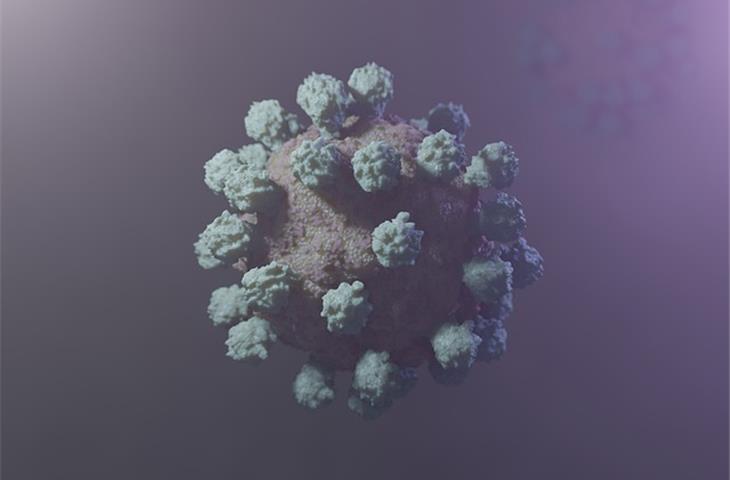Patients with epidermal growth factor receptor (EGFR) mutations have found osimertinib as a revolutionary therapy in the field of lung cancer therapy.A major challenge is posed by the appearance of mutations causing resistance to osimertinib.The article explores the complexities of these mutations and outlines vital requirements for the search for effective control.

Osimertinib, a specific therapy, has demonstrated significant effectiveness in the treatment of advanced non-small cell lung carcinoma (NSCLC) (NSCLC) with EGFR alterations.Despite its benefits, a large number of patients develops resistance to osimertinib, resulting in cancer progression.Osimertinib mutations causing resistance are underpinned by complicated and varied mechanisms, which involve multiple pathways and molecular changes.

A comprehensive understanding of the basic molecular mechanisms is essential to overcome osimertinib resistance.This includes pinpointing individual mutations that confer resistance, elucidating the involved signaling pathways, and determining possible treatment targets.The creation of new treatment approaches is crucial given the complexity of osimertinib mutations causing resistance.

This involves pinpointing and focusing on alternate pathways, developing mixed treatments, and exploring the potential of immune checkpoint inhibitors.Accurate and early identification of mutations conferring osimertinib opposition is essential for prompt treatment.Therefore, developing enhanced detection methods, such as new generation sequencing (NGS) and circulating tumor DNA analyses, is a high priority.
A individualized care is necessitated for the management of mutations conferring osimertinib opposition, which takes into account the individual's unique clinical and genetic composition.This includes tailored treatment regimens, comprehensive complementary care, and client information.Addressing this challenge requires understanding the various mechanisms that contribute to opposition.
The T790M mutation within the EGFR catalytic domain is the most principal source of osimertinib opposition.By directly binding to the drug and inhibiting its blocking potential, this mutation confers opposition to osimertinib.Understanding the role of the T790M mutation is crucial for forming tactics to overcome opposition.
Besides T790M mutation, several other EGFR resistance variants, such as L747S mutation, M854E mutation, and G796D mutation, have been identified.By altering the EGFR protein architecture, these mutations contribute to resistance and affect its interaction with osimertinib treatment.characterization these mutations and their effects on resistance is vital for developing precision medicines.
Resistance to osimertinib treatment can also arise from alternative signaling routes and compensatory processes.For instance, activation of the MET/HGF signaling pathway or upregulation of EGFR amplification process leads to resistance.Identifying these pathways and targeting them with new inhibitors is crucial for resistance breakthrough.
The development of novel therapeutic strategies is of highest priority to overcome osimertinib treatment resistance.This involves exploring various approaches, including combined treatments, immune checkpoint modulators, and repositioning off-label medications.Combining osimertinib treatment with other precision medicines, such as EGFR inhibitors or MET/HGF blockers, enhances the efficacy of treatment and facilitates the overcoming of resistance.
additional research is needed to understand the possible function of immunological checkpoint modulators in neutralizing osimertinib resistance and enhancing patient results.reassigning existing medications, which have been approved for other indications, can be a economical solution to neutralizing osimertinib resistance.
This involves identifying drugs with activity against tolerant alterations or related pathways.next-generation sequencing, a powerful tool for locating resistance mutations, can provide thorough data about the genetic makeup of the tumor through the analysis of cancerous DNA, enabling the identification of resistance mutations.
blood-based biopsies, which involve the analysis of circulating cancerous DNA (ctDNA) in the blood, offer a minimally invasive alternative to conventional tissue biopsies and can be used to observe resistance mutations and treatment response.A patient-centered strategy is necessitated for the control of osimertinib resistance mutations. This involves:
Tailored treatment plans, comprehensive supportive treatment, and patient knowledge.Tailored treatment plans take into account the individual's distinct clinical and molecular characteristics.This includes accounting for specific resistance alterations, the patient's general well-being, and the patient's past therapeutic course.
Supportive care plays a crucial role in controlling symptoms and adverse reactions of treatment.This includes pain control, dietary assistance, and mental health counseling.Educating patients about their condition, treatment options, and potential side effects is essential for well-informed choice.
This helps patients to actively participate in their care and to improve their well-being.The treatment of NSCLC with epidermal growth factor receptor alterations faces a major hurdle represented by Tagrisso resistance variants.To tackle this challenge, a multi-dimensional strategy is needed, which involves a thorough knowledge of resistance pathways, the development of new treatment approaches, improved diagnostic instruments, and patient-centered care.
By meeting these needs, we can enhance results for individuals affected by osimertinib resistance mutations and contribute towards the progress in lung cancer treatment.